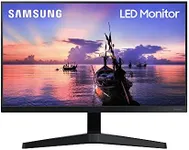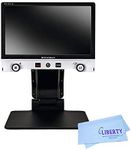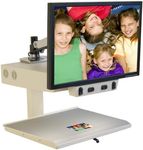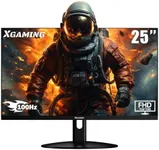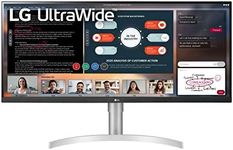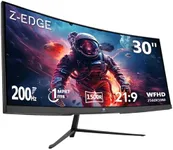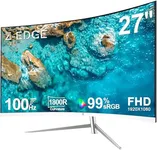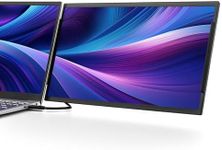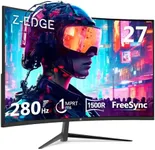Buying Guide for the Best Computer Monitor For Visually Impaired
Choosing the right computer monitor for visually impaired users involves considering several key specifications that can significantly impact the user's comfort and ability to see the screen clearly. It's important to focus on features that enhance visibility, reduce eye strain, and provide a comfortable viewing experience. Here are the key specs to consider and how to navigate them to find the best fit for your needs.Screen SizeScreen size refers to the diagonal measurement of the monitor's display area. For visually impaired users, a larger screen size can be beneficial as it allows for larger text and images, making them easier to see. Monitors typically range from 19 inches to 32 inches or more. If you have significant visual impairment, opting for a larger screen (27 inches or more) can provide a more comfortable viewing experience. However, ensure that the monitor fits comfortably on your desk and within your field of view.
ResolutionResolution is the number of pixels that make up the display, usually represented as width x height (e.g., 1920x1080). Higher resolution means more detail and sharper images. For visually impaired users, a higher resolution can help make text and images clearer. Common resolutions include Full HD (1920x1080), Quad HD (2560x1440), and 4K (3840x2160). If you need to see fine details or work with high-definition content, a higher resolution monitor is recommended. However, ensure that the text and icons are not too small; you may need to adjust the display settings to increase their size.
BrightnessBrightness is measured in nits and indicates how much light the monitor emits. Higher brightness levels can make the screen easier to see, especially in well-lit environments. Monitors typically range from 200 to 600 nits. For visually impaired users, a monitor with higher brightness (300 nits or more) can help improve visibility. However, very high brightness can cause eye strain, so it's important to find a balance that works for you and allows for comfortable long-term use.
Contrast RatioContrast ratio is the difference between the darkest black and the brightest white a monitor can display. A higher contrast ratio means more distinct and vivid images. For visually impaired users, a higher contrast ratio can help distinguish between different elements on the screen. Look for monitors with a contrast ratio of at least 1000:1. Some monitors offer dynamic contrast ratios, which can adjust based on the content being displayed, providing better visibility in different scenarios.
Panel TypePanel type affects the monitor's color accuracy, viewing angles, and response time. The most common types are TN (Twisted Nematic), IPS (In-Plane Switching), and VA (Vertical Alignment). For visually impaired users, IPS panels are generally recommended because they offer better color accuracy and wider viewing angles, which can help with visibility from different positions. VA panels also provide good contrast and color reproduction. TN panels are usually less expensive but have narrower viewing angles and lower color accuracy.
AdjustabilityAdjustability refers to the monitor's ability to tilt, swivel, pivot, and adjust in height. For visually impaired users, having a monitor that can be easily adjusted to the most comfortable viewing position is crucial. Look for monitors with ergonomic stands that allow for a wide range of adjustments. This can help reduce neck and eye strain by ensuring that the screen is at the optimal height and angle for your needs.
Anti-Glare CoatingAnti-glare coating reduces reflections and glare from external light sources, making the screen easier to see. For visually impaired users, an anti-glare monitor can help reduce eye strain and improve visibility, especially in brightly lit environments. When choosing a monitor, consider one with a good anti-glare coating to ensure a clear and comfortable viewing experience.
